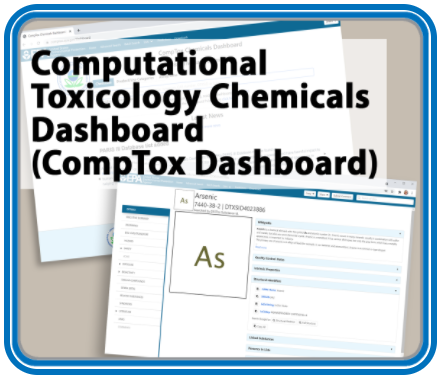Five Year Anniversary of the CompTox Chemicals Dashboard Brings New Updates
Published December 14, 2021

When you need to know the definition of a word, you look in a dictionary. When you need to find out information about a chemical, you go to EPA’s CompTox Dashboard. Since its creation in 2016, the dashboard has been an important source for chemical information online. Scientists and others use the dashboard to make more informed decisions about potential health and environmental effects of chemicals.
Over the years, EPA has been expanding the dashboard to include and synthesize more and more sources of chemical data. In November, EPA researchers released the 11th version of the dashboard, which now includes chemistry, toxicity, and exposure information for over 900,000 individual chemicals and provides access to 300 chemical lists. Because the dashboard has substantially expanded its scope since its initial release, it was necessary to update the underlying software architecture to improve data handling and performance to make it easier for people to use the dashboard. This latest version of the dashboard is the first time these functional improvements are being released publicly.
With this release comes some exciting features that make sharing chemical data with other online applications more seamless. A couple of key improvements include the implementation of a datahub for data management and the development of a rich application programming interface (API). An API is a means of communicating between separate applications via online software. Both the datahub and API will support the development of multiple software applications and allow public users to programmatically access the data in the dashboard.
The user interface and experience have also been updated. The new user interface improves interactivity with the data and provides a more modern layout. For example, data handling now allows flexible table elements that make searching and navigating within the data a breeze. Additionally, popular tools within the dashboard like Generalized Read-Across (GenRA) and PubMed have been separated into their own modules, while still remaining accessible within the dashboard interface.
Following the 2021 refresh of the dashboard, regular updates to the data will continue, and new training materials (videos, guidance, etc) will be released to help guide the community on how to use the new features of the dashboard.
